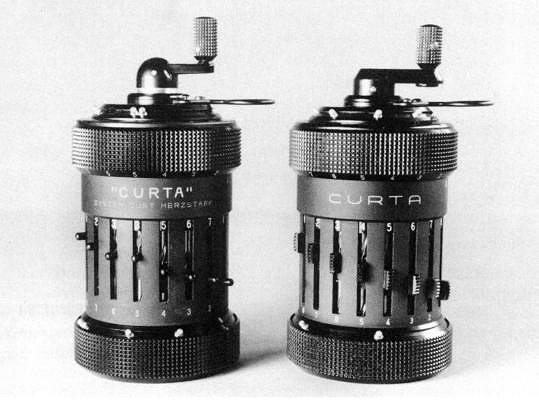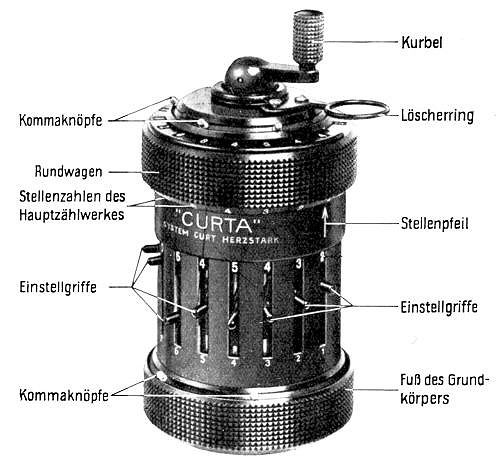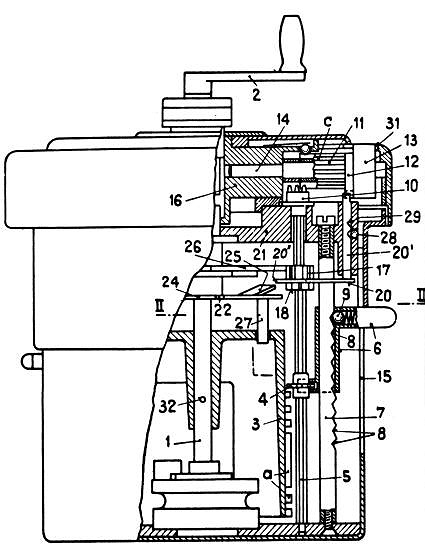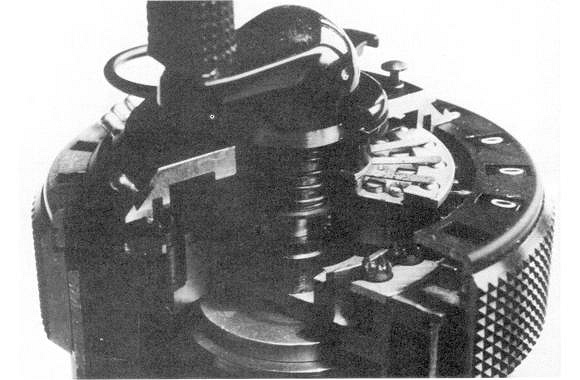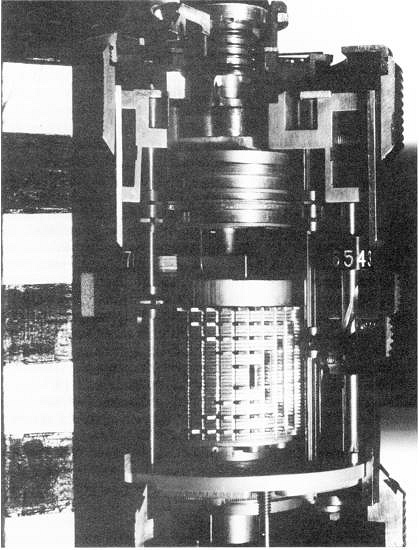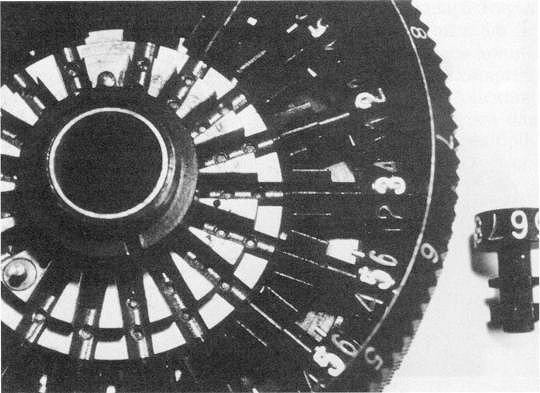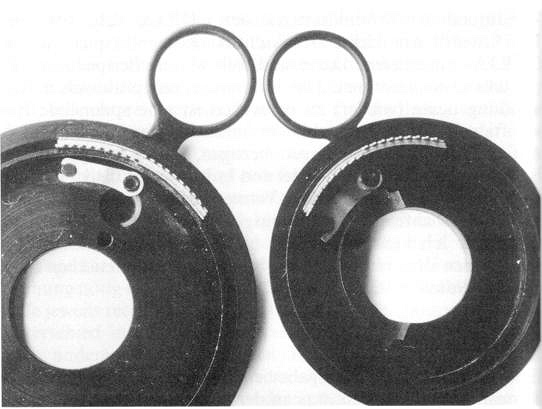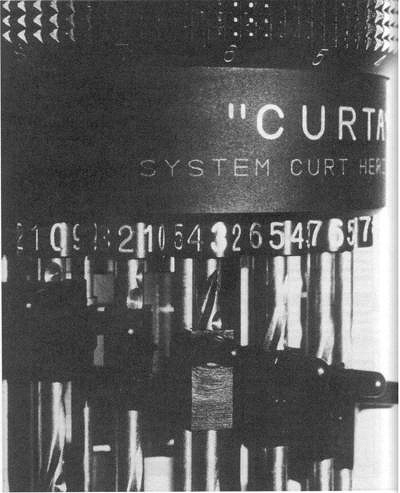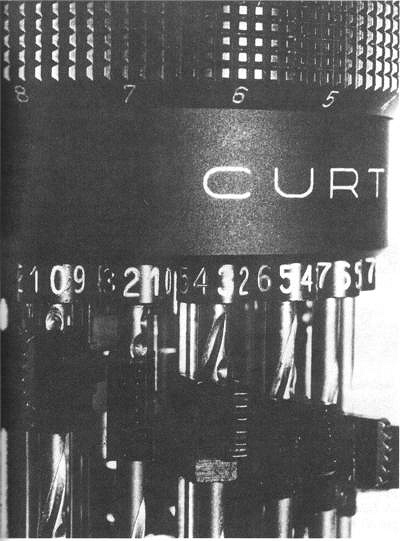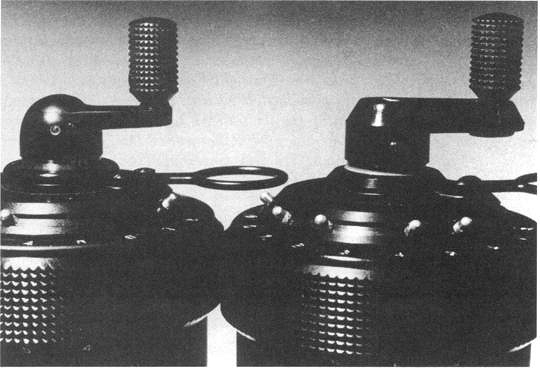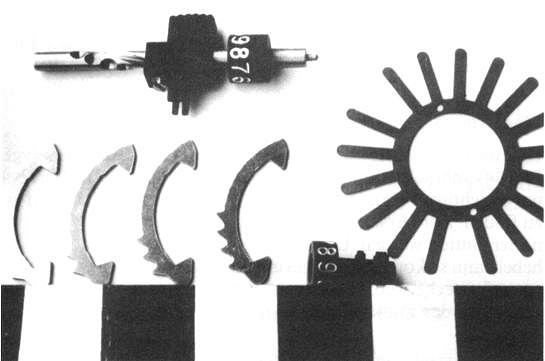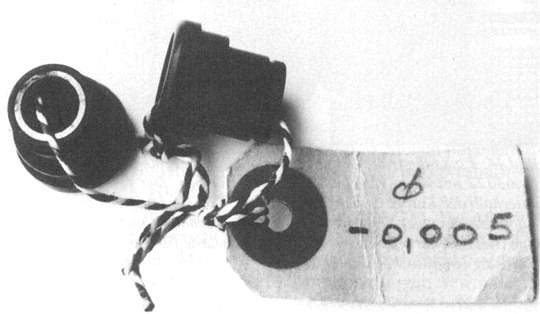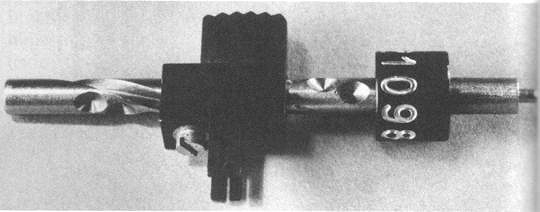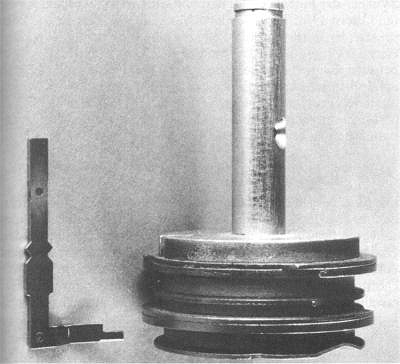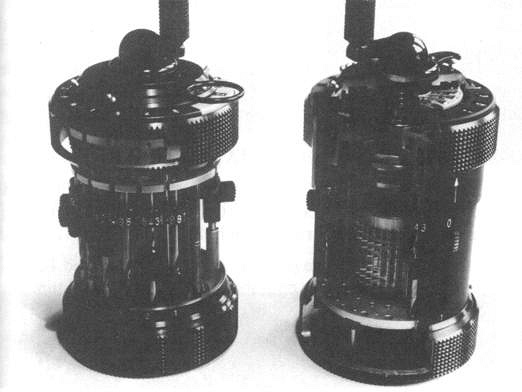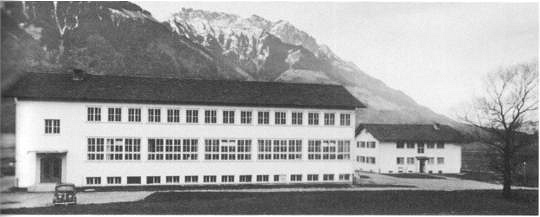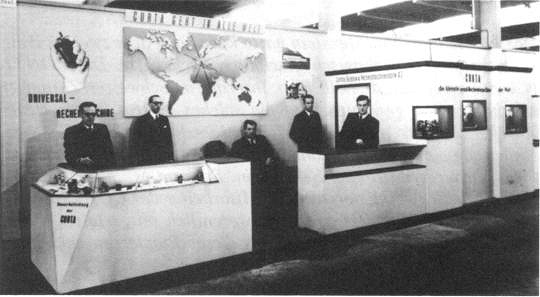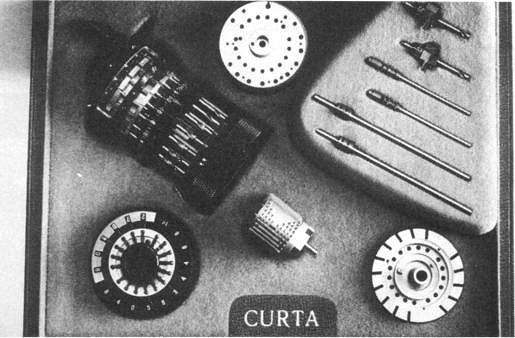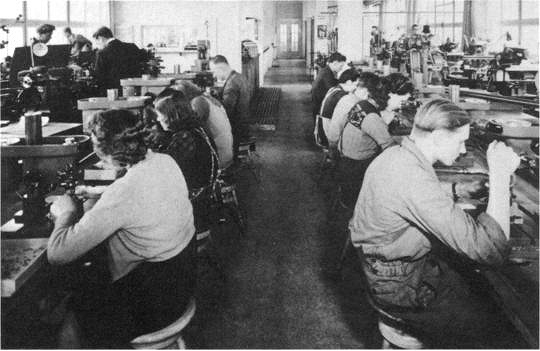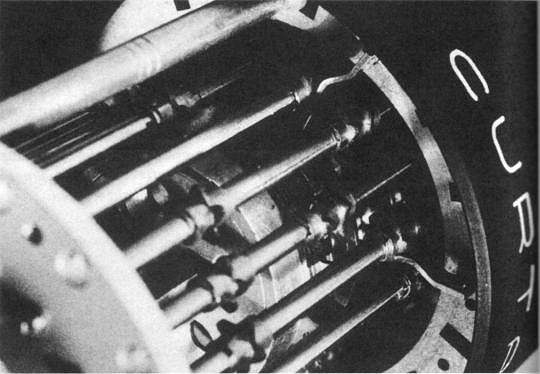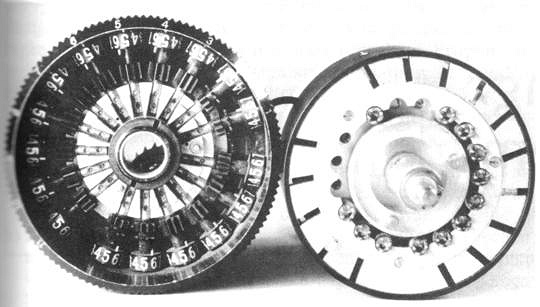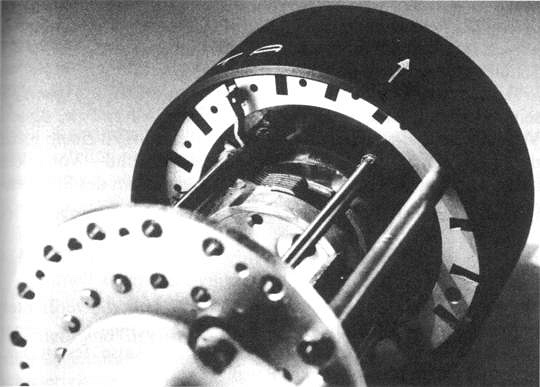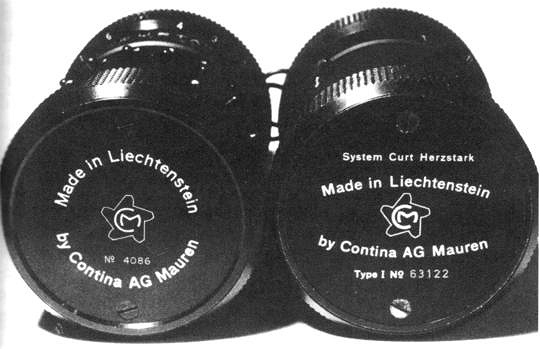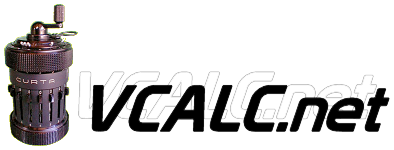
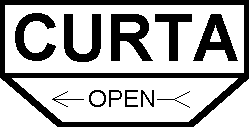


|
This artice was translated by Andries de Man http://udel.edu/~ademan Copies of this article can be purchased from Charles Babbage Institute at University of Minnesota May 31, 2006 - Thanks to Jürgen Müller for finding an original copy of this article and producing much improved scans of the images. They're a big improvement over my 5th generation photocopy images! Also see an additional note from Jürgen at the end of this article about Backup magazine. -Rick- |
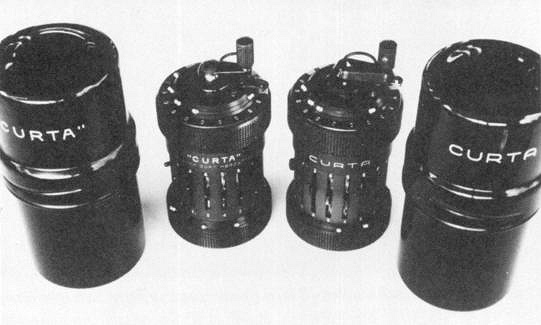
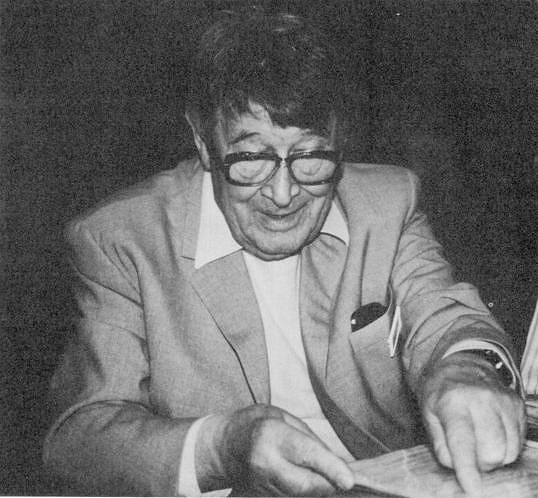
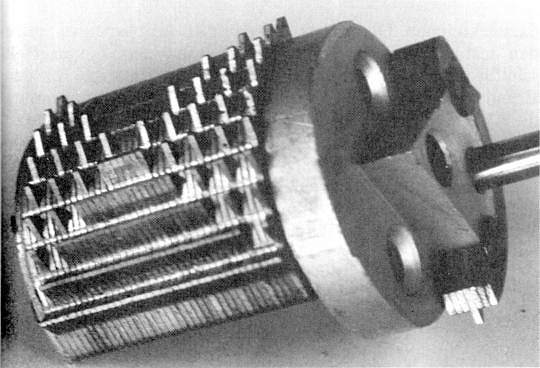
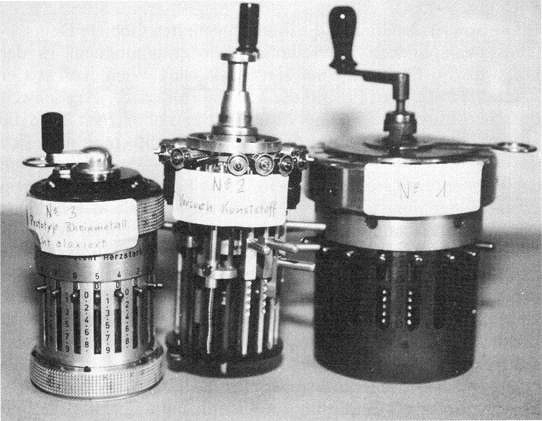
Liliput was indeed the original name, but the Society didn't like it. During the trade fair in Basel (1948) Miss Ramaker, trade correspondent of Contina AG said: "This machine is the daughter of Mister Herzstark. When the father is called CURT, the daughter has to be called CURTA." That's why the machine has been called CURTA ever since.I went too fast. We have the idea and the name, but yet no machine. Curt Herzstark was still in Buchenwald. It was 1944, and the Allies threatened the German Reich more and more. On August 18, 1944, the Gustloff Factories were bombed, several hundreds of prisoners died and half the factory was destroyed. During the second bombardment a fellow prisoner lying next to him was deadly injured by a bomb fragment. Curt Herzstark survived miraculously. The part of the factory that was still operable was moved to a deserted salt mine in Billroda, 30 kilometers from camp Buchenwald. Here, 600 meters below the surface, they tried to resume production. Two days before the liberation the prisoners walked back to Buchenwald. Finally, the Americans liberated camp Buchenwald on April 11, 1945. Curt Herzstark was alive and free. Additionally, he had a complete set of construction drawings for his miniature calculator in his pocket. Now the time had come to find a way to realize it. He contacted the Rheinmetall factories. And, as a kind of compensation, Herzstark was named director of the Rheinmetall factories and had to supervise the reconstruction. His fortune didn't last long, because in July 1945 Thüringen and Sachsen became part of the Soviet occupation zone, based on the Potsdam agreement. The few months until November 1945 were sufficient to revise the drawings and make three prototypes. These three prototypes still exist (see Figure 4). The Soviets started to rebuild their parts of Germany according to their own plans. As a consequence, Curt Herzstark fled to Vienna, where he contacted a friend of the Herzstark family, the Swiss office machine manufacturer Jost. The take-over of production by Jost was almost established - imagine: CURTA, made in Switzerland - when the Principality of Liechtenstein showed up. Prince Franz Josef II of Liechtenstein [12] was trying to convert his poor farming country into a modern industrial state. And he succeeded, as one could read in the press at the anniversary of his government in 1988. The royal family invited Herzstark to build a factory for the production of his calculator in Mauren. It was a tempting offer, and so the Contina AG was founded in 1946. This development was a disappointment for the firm Jost, which was only partially compensated by getting sole representation for the CURTA. Curt Herzstark became technical director of the Contina AG. The real driving force and decision maker of the enterprise was a financing society. One could expect problems due to this difficult and obscure organization structure, and they emerged soon. At first, Curt Herzstark succeeded in manufacturing the first CURTA machines with a team of innovative expert mechanics [13]. The first production hall in 1947 was only provisionary, a ballroom in Hotel Hirschen in Mauren. At the same time production was started, a new factory building was being constructed for the Contina AG. One can easily compare the current building (Figure 5) with the factory from the 50's. A figure in the brochure "Calculation examples for the CURTA calculator", printed around 1955, shows on page 51 a picture of the "CONTINA FACTORY IN MAUREN; PRINCIPALITY OF LIECHTENSTEIN".
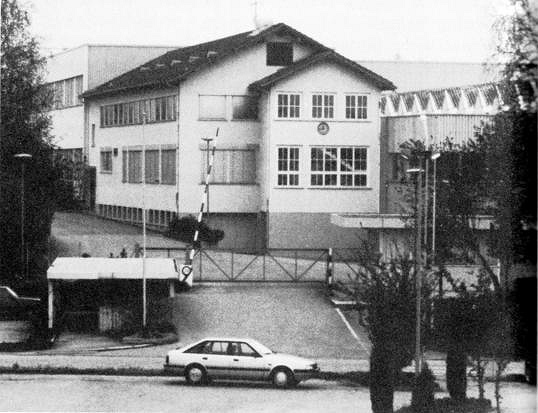
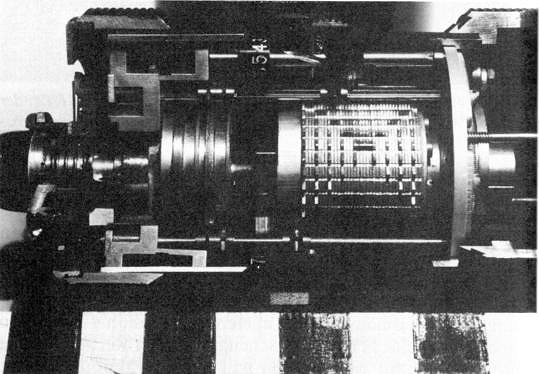
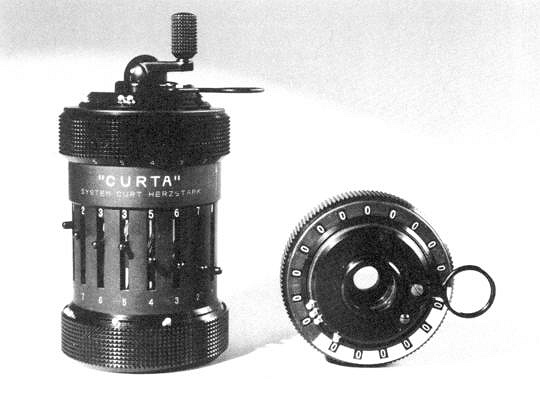
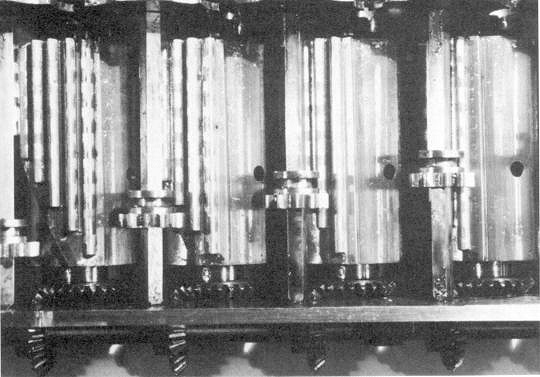
| 219875 - 5789 = ? | ||
| We assume that we have an 11-digit machine. | ||
| So the minuend is: | 00 000 219 875 | Line 1 |
| and the subtrahend is: | 00 000 005 789 | |
| The nines-complement of the second number is: | 99 999 994 210 | Line 3 |
| It is made by completing each digit to 9. | ||
| Now we add line 1 and line 3: | 100 000 214 085 | |
| The leading 1 lies outside the range of 11 digits, and is omitted. | ||
| The result is 1 short, so we add 1 and get: | 00 000 214 086 | |
| The right result! | ||
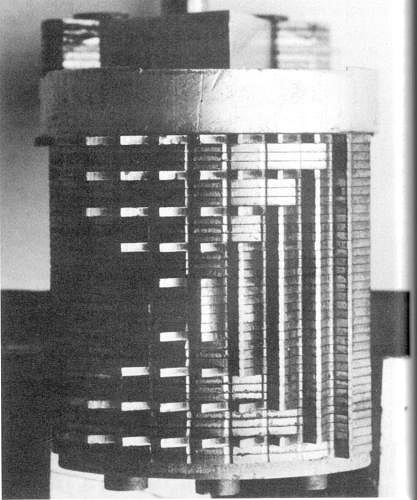
"A calculator will automatically subtract by addition, when it doesn't transfer to the main counter the number set to subtract, but, instead, its nine's complement and subsequently adds a one to the lowest position. The construction problem is to enable a choice between two toothed structures to be used. The smallness of the available space and the expected lack of reliability prevented the use of movable teeth. The solution was a simple construction, consisting of a rigid body unifying two normal stepped drums, one of which is put upside-down."
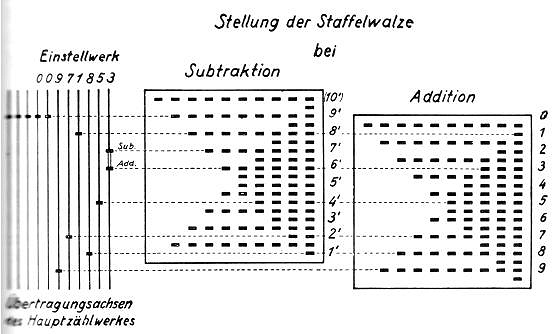
"The one set of teeth, used for additions, starts, like any ordinary stepped drum, at the top with one tooth and ends at the bottom with nine teeth. These tooth segments are designated with 1 to 9 in the right part of Figure 4. Of course, their distance in a vertical direction is equal to the distance the setting gears travel when shifted one unit. The second group of teeth - the complement-Figure 5 [?] shows the details.toothing - is mixed in with the first in such a way that one and a half times the distance between segments below each segment of the normal toothing, there is a segment of the complement-toothing which adds up with the first one to nine. This system allows one to subtract the set number by simply pulling up, using the crank, the stepped drum over one and a half times the distance between segments, and then turning it in the same direction as for addition. During this operation the 11-digit nine's complement is automatically added, and the first position is increased by one."
